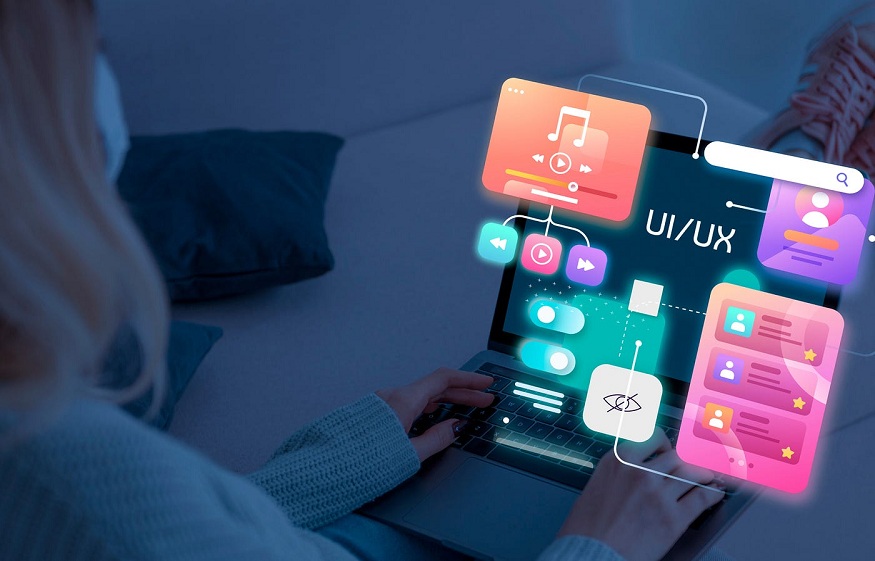User experience (UX) design is no longer just about creating interfaces that look good or are easy to navigate. It has evolved into a strategic tool that drives user engagement, retention, and ultimately business success. But the most significant shift happening right now is the move toward personalized UX design—an approach that delivers unique, tailored experiences for every individual user.
Personalization in UX is rapidly becoming the key differentiator among digital products. The simple fact is that today’s users expect brands and platforms to understand their preferences, anticipate their needs, and adapt dynamically to their behavior. This transformation is not a passing trend; it’s a fundamental change in how digital products must operate to survive and thrive.
In this comprehensive blog, we’ll dive deep into what personalized UX design entails, explore why personalized UX matters, the technologies that enable it, challenges businesses face, and why it represents the future of digital products.
The Evolution of UX Design: From Universal to Individualized Experiences
UX design initially emerged with a focus on universal usability—creating digital products accessible and intuitive for as many people as possible. This meant standardizing layouts, simplifying navigation, and ensuring accessibility across devices and abilities. While these fundamentals remain critical, this “one-size-fits-all” mindset increasingly falls short in meeting diverse user expectations.
The rise of big data, mobile computing, and AI has radically changed the landscape. Designers can now leverage vast amounts of user data to move beyond static designs and create dynamic, individualized experiences. This evolution from “usable” to “personalized” UX is driven by the insight that every user is unique, with distinct goals, preferences, and behaviors.
What is Personalized UX Design?
Personalized UX design refers to tailoring a product’s interface, content, and interactions to individual users in real time. It uses data points such as past behavior, location, device, time of day, and demographic information to adapt the user journey and make it more relevant.
This personalization can take many forms, including:
- Dynamic Content: Displaying different homepage banners or product recommendations based on a user’s interests.
- Adaptive Navigation: Changing menu options or layouts depending on user role or preferences.
- Contextual Messaging: Offering tailored support or tips when users reach certain milestones or face obstacles.
- Customized Features: Enabling or disabling specific functionalities based on user proficiency or subscription level.
Unlike simple customization, which requires users to manually set preferences, personalized UX leverages AI and automation to make intelligent decisions and adjustments on the user’s behalf, creating seamless and intuitive experiences.
Why Personalized UX Matters: Key Business and User Benefits
Understanding why personalized UX matters is essential for any company looking to optimize its digital products. Here are the core reasons:
1. Deepens User Engagement
Users who encounter content and experiences tailored specifically for them are far more likely to stay engaged. For example, personalized product recommendations on e-commerce sites can encourage users to browse longer and explore more options, increasing the likelihood of a purchase.
2. Enhances Customer Satisfaction and Loyalty
Personalization shows users that a brand understands and values them. When digital products anticipate needs and reduce friction—such as by remembering preferences or streamlining workflows—users feel a stronger emotional connection and develop brand loyalty.
3. Improves Conversion Rates
Personalized UX reduces the friction between interest and action. For example, dynamic call-to-action buttons, personalized discount offers, or location-based promotions can nudge users toward conversions more effectively than generic messaging.
4. Reduces Churn and Boosts Retention
By continuously adapting to changing user needs and behaviors, personalized experiences prevent frustration and boredom. This keeps users coming back, reducing churn rates and increasing lifetime customer value.
5. Supports Business Growth and Competitive Advantage
In crowded markets, personalized UX helps differentiate products by offering superior, memorable experiences. Companies investing in personalization are more likely to see higher revenue, better user retention, and greater customer advocacy.
Technologies Powering Personalized UX Design
The ability to deliver personalized UX at scale is enabled by several key technologies:
Data Analytics and User Behavior Tracking
Personalization starts with collecting comprehensive data across multiple touchpoints—websites, apps, CRM systems, and more. Advanced analytics turn this raw data into actionable insights about user preferences and behaviors.
Artificial Intelligence and Machine Learning
AI models analyze vast datasets in real time, identifying patterns and predicting user needs. Machine learning algorithms continuously refine personalization strategies based on user interactions, ensuring that experiences evolve dynamically.
Predictive Analytics and Recommendation Engines
These tools forecast user actions like purchases or churn risk, enabling proactive engagement. For example, a recommendation engine might suggest products based on purchase history and browsing behavior.
Real-Time Automation
Automation platforms enable instant execution of personalized interactions across multiple channels—email, web, mobile push notifications without human intervention, ensuring timely and contextually relevant experiences.
Real-World Examples of Personalized UX in Action
Leading digital companies set powerful examples of personalized UX design:
- Netflix: Employs complex algorithms to analyze viewing history and ratings to deliver personalized movie and show recommendations for millions of users worldwide, increasing watch time and satisfaction.
- Amazon: Uses browsing and purchase data to customize product listings, search results, and promotional offers tailored to each user’s interests and past behavior.
- Spotify: Creates personalized playlists and music recommendations, like “Discover Weekly,” based on listening habits and preferences.
- Airbnb: Offers customized search results and travel suggestions based on user location, previous bookings, and wishlist items.
These companies demonstrate how thoughtful personalization improves the user journey while significantly driving engagement, retention, and revenue.
Challenges in Implementing Personalized UX
While the benefits are clear, businesses face challenges:
Data Privacy and Ethical Concerns
Collecting and using personal data requires strict adherence to privacy laws like GDPR and CCPA. Transparency, consent, and data security are essential to maintain user trust.
Data Quality and Integration
Effective personalization depends on accurate, comprehensive data. Fragmented or poor-quality data can lead to irrelevant or inaccurate personalization, hurting the user experience.
Technical Complexity
Integrating AI-driven personalization tools into existing platforms requires technical expertise and infrastructure investment.
Balancing Personalization and Simplicity
Too much personalization can overwhelm or confuse users. Finding the right balance between tailored experiences and intuitive simplicity is critical.
The Future of Personalized UX Design
The future points toward increasingly sophisticated personalization, powered by advances in AI, AR/VR, and voice technology. We will see:
- Hyper-personalized, omnichannel experiences that seamlessly integrate across devices and touchpoints.
- Predictive systems that anticipate user needs before they arise.
- Greater use of emotional and behavioral data to tailor experiences beyond demographics.
- Fully autonomous systems that self-optimize personalization strategies without manual input.
Businesses that embrace why personalized UX matters and invest in these technologies today will be the frontrunners in the digital marketplace of tomorrow.
Conclusion
Personalized UX design is not just a trend—it is the future of how digital products must operate. By delivering experiences that are uniquely tailored to each user’s needs and preferences, businesses can create deeper engagement, higher conversions, and lasting customer loyalty.
If you want to take your digital product to the next level with effective personalization strategies, platforms like Nudge can help you harness data and AI to build behavior-driven experiences that resonate.
Book a demo with Nudge to see how their AI-powered platform can transform your UX design, boost conversions, and give you a competitive edge.




